#NIHClinicalCntr
Photo

What does a teacup and saucer have to do with Pain Awareness Month? Pain is not just physical. It’s affected by your psychological state, coping skills, physical or emotional limitations, financial concerns, spirituality, family functioning, and fear of death. The NIH Clinical Center’s Pain and Palliative Care unit sought to create a comfortable setting for patients, families, and health care givers to talk. Having tea together enabled such conversations to take place. This teacup, now in our collection, was used in this program.
2 notes
·
View notes
Photo
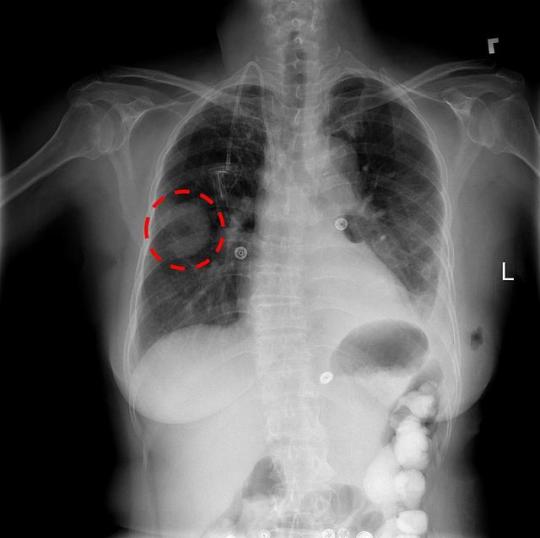
NIH Clinical Center provides one of largest publicly available chest x-ray datasets to scientific community https://t.co/iwru5X4s0t http://pic.twitter.com/cojxVEPJNI
— NIH Clinical Center (@NIHClinicalCntr) October 2, 2017
0 notes
Text
Phase II Study of Cladribine: How This Affects Clinicians @NIHClinicalCntr @NIH
http://dlvr.it/RSQkKn
0 notes
Text
Our latest HIV & AIDS Updates' Magazine. Published twice daily! #ScienceNotStigmahttps://t.co/iljFmfUru8 Thanks to @PreventionAC @NIHClinicalCntr @HIVptn #hiv #endhivstigma
— HIV & AIDS Updates U=U (@HIVAIDSupdates) October 30, 2019
from Twitter https://twitter.com/HIVAIDSupdates
October 30, 2019 at 07:47PM
0 notes
Text
HCSM News
UBC bestows national prizes on Canadian health science pioneers
Margolese National Heart Disorders Prize via @UBCmedicine#cdnhealth#hcsmcahttps://t.co/jVpP0llNWF Cc #tedmed @BCGovNews @GovCanHealth @NIHClinicalCntr #hcsm
— HCSM News (@HCSMnews) July 26, 2018
0 notes
Photo
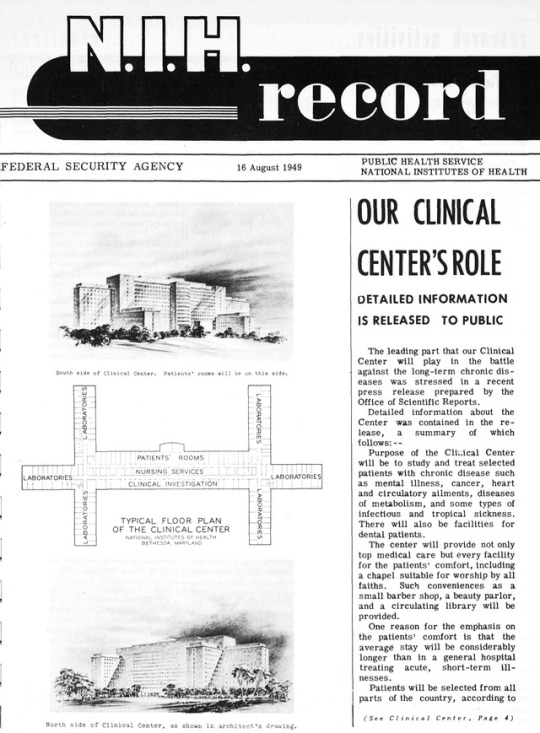
70 years ago, a press release explained the purpose of the NIH Clinical Center, which was being built at the time: “To study and treat selected patients with chronic disease such as mental illness, cancer, heart and circulatory ailments, diseases of metabolism, and some types of infectious and tropical sickness. There will also be facilities for dental patients.” While the diseases that are studied @NIHClinicalCntr have changed, the emphasis on patient care and the latest technology is constant. Read the whole 1949 article https://nihrecord.nih.gov/sites/recordNIH/files/pdf/1949/NIH-Record-1949-08-16.pdf
2 notes
·
View notes
Photo

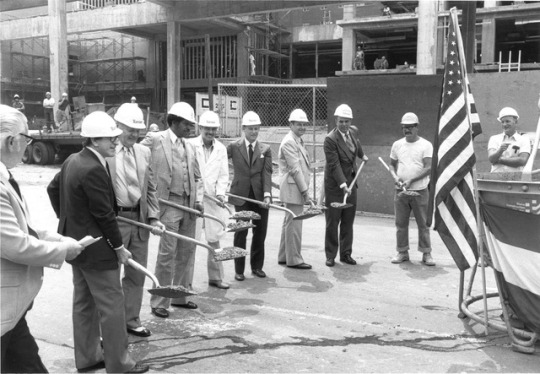

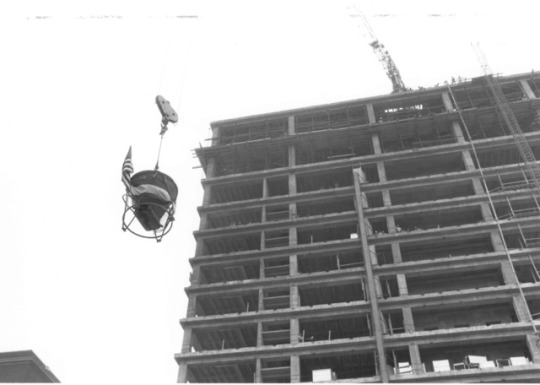

Today’s the 40th anniversary of the Top Out celebration! What? That’s when a ceremonial bucket of concrete was hoisted to the top of the NIH Clinical Center to mark the end of the concrete work on the Ambulatory Care Research Facility (ACRF). The ACRF is part of @NIHClinicalCntr Building 10.
3 notes
·
View notes
Photo
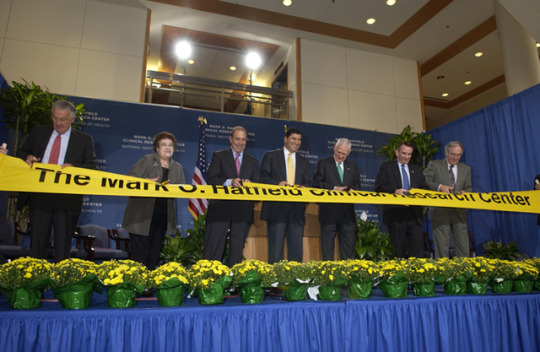
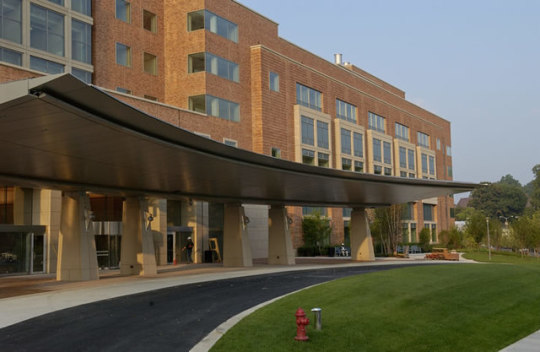
An illustrious group dedicated the Mark O. Hatfield Clinical Research Center 15 years ago today by cutting a very large ribbon: (left to right) Sen. Paul Sarbanes, Susan Butler, Dr. John I. Gallin, Dr. Elias A. Zerhouni, Sen. Mark O. Hatfield, DHHS Sec. Tommy Thompson, and Sen. Tom Harkin. Hatfield (Oregon-R), who served for 30 years in the U.S. Senate. As chairman of the committee on appropriations for eight years, he helped to secure increased funding for NIH. Hatfield’s deep and abiding commitment to medical research is continued @NIHClinicalCntr https://clinicalcenter.nih.gov/ocmr/history/hatfieldcrc/index.html
1 note
·
View note
Photo
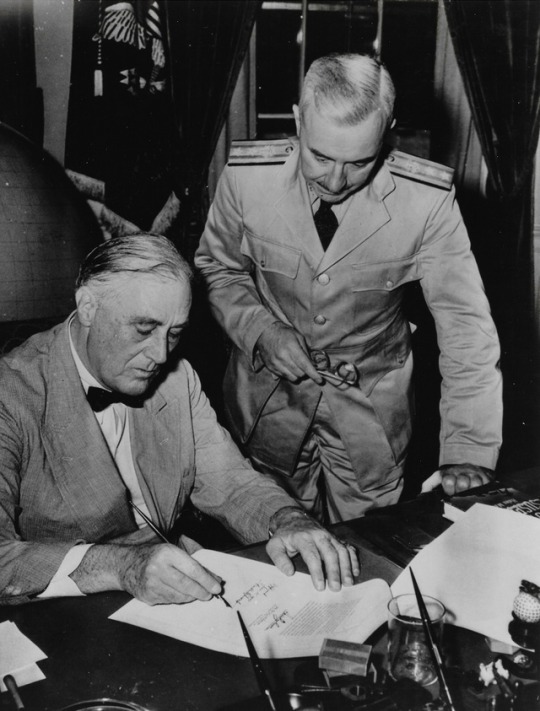
The historic signing of the Public Health Service (PHS) Act, enacted 75 years ago today, uh, isn't captured in this photo. Apparently no one took a picture of that! What we do see, though, are the two key players: President Franklin Roosevelt and Surgeon General Thomas Parran in 1943 as FDR signed into law a bill to create the U.S. Cadet Nursing Corps. Among the provisions of the PHS Act was authorizing the Surgeon General to conduct clinical research and create new institutes, which led to the NIH Clinical Center and… several new institutes. The National Cancer Institute (NCI) formally became part of NIH, and the NIH was allowed to give grants like NCI. Today nearly 80% of the NIH budget goes to grants. For more on this ground-breaking legislation, read https://www.ncbi.nlm.nih.gov/pmc/articles/PMC1403570/pdf/pubhealthrep00057-0003.pdf @NIH @theNCI @NIHgrants @NIHClinicalCntr
2 notes
·
View notes
Photo
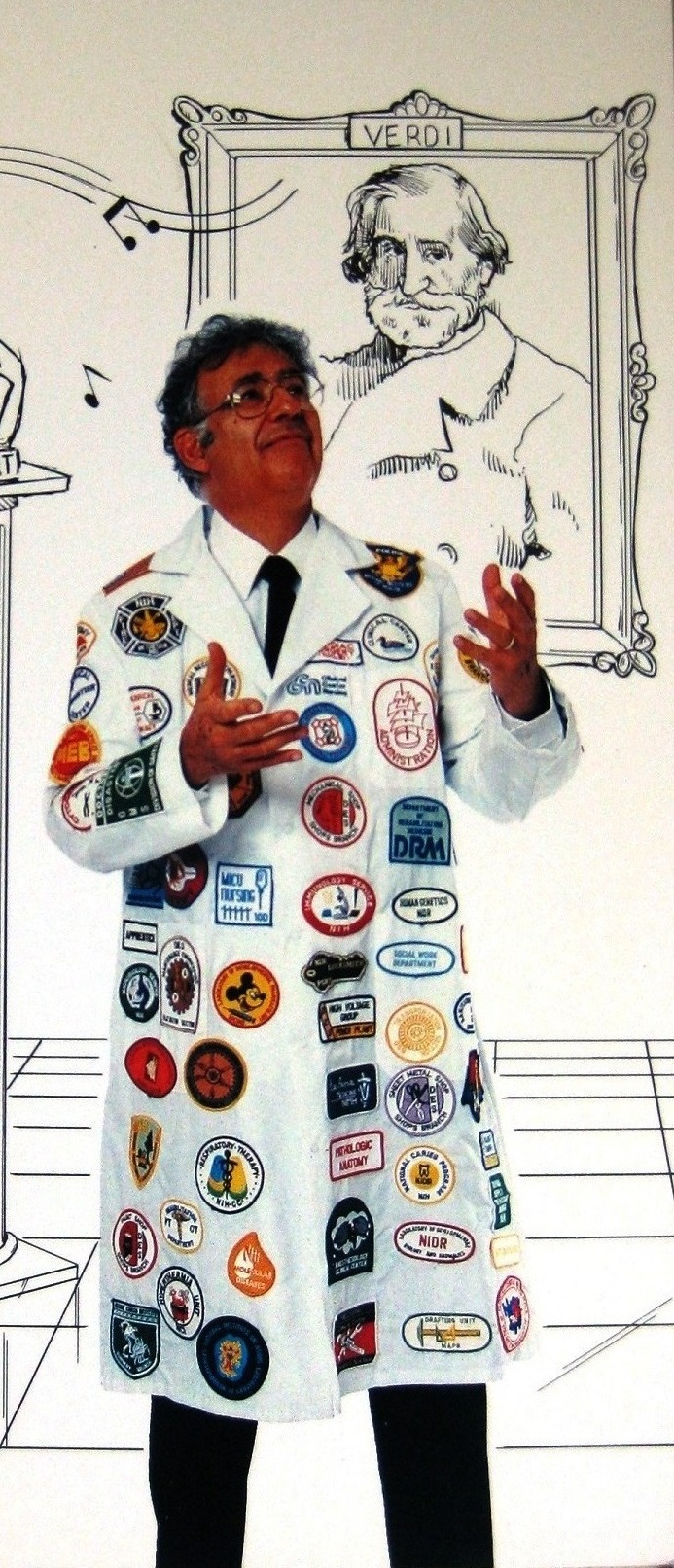
We are sad to learn of the death of Dr. Saul Rosen, who served as Deputy Director of the NIH Clinical Center beginning in 1984, and who stepped in as Acting Director from 1990-1994. Rosen was known for his love of opera and his love of the Clinical Center. In this photo, taken from a holiday card in the NIH Stetten Museum collection, Rosen wears a white coat covered with patches from different NIH Clinical Center components. He said of the Clinical Center, “You are never stymied to start an adventure.”
Rosen earned his undergraduate and M.D. from Harvard University, and a Ph.D. from Northwestern. He came to the NIH as a Clinical Associate in 1958 at NIAMS, and returned in 1961 as a senior investigator in the institute's Clinical Endocrinology Branch from 1961-1984. During that time, he studied the inappropriate production of hormones by tumors, and the body's production of placental proteins in general. He died at age 90 on February 28, 2019. @NIHClinicalCntr Read his oral history https://bit.ly/2O4ENUi
1 note
·
View note
Photo
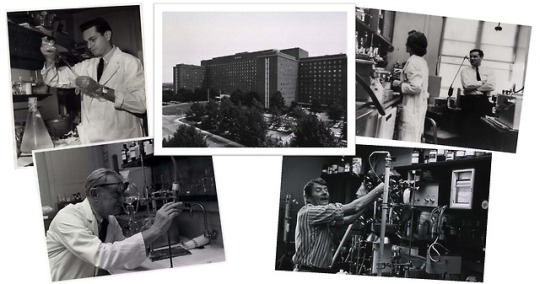
NIH Fun Fact 10: Four Nobel Prize winners did their work in just a single corridor in the NIH Clinical Center, Corridor D. Marshall Nirenberg cracked the genetic code on the 8th floor (1968); Julius Axelrod categorized the release and reuptake of catecholamine neurotransmitters on the 2nd floor (1970); Christian Anfinsen conducted famous protein-folding experiments on the 7th floor (1972); and Martin Rodbell demonstrated cell signaling on the 8th floor (1994). That's one productive corridor!
1 note
·
View note
Photo
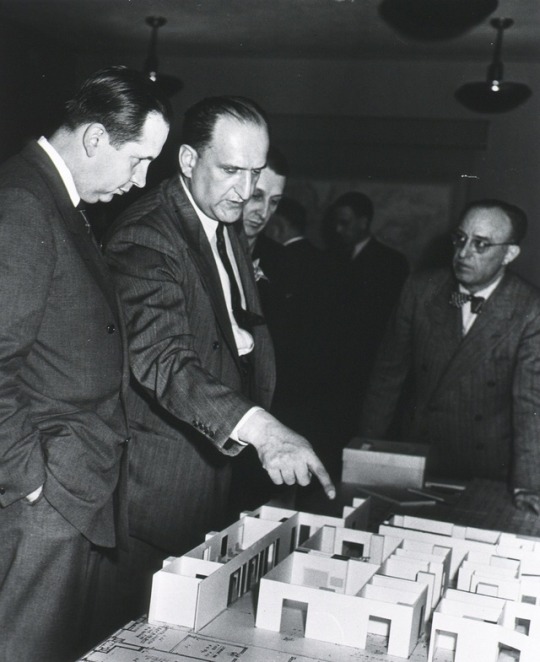
NIH Fun Fact 7: There was almost a Presidential Suite in the Clinical Center. Dr. Jack Masur, here showing a model of the Clinical Center to Surgeon General Leonard Scheele, cancelled the proposed suite. NIH scientists wanted to concentrate on research and anyway, as William Sebrell (NIH director 1950--1955) remembered, “The Army and the Navy didn’t want us getting in on this Presidential business.”
https://bit.ly/2Lre1Ep
1 note
·
View note
Photo
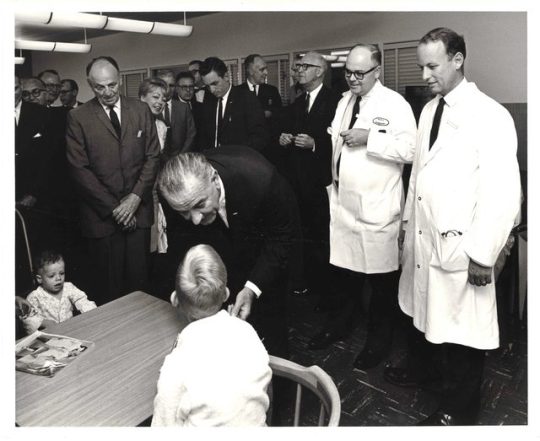
I think our archivist likes this photo because of the story. On August 9, 1965, President Lyndon Johnson was bending down to talk to a boy who recently received two new heart valves at the National Institutes of Health Clinical Center. When background noise created by the assembled dignitaries prevented the President from hearing the sounds of these valves, Johnson stood up and demanded “Quiet!” Suddenly, the clicking of the valves was immediately audible to all.
From left to right: Surgeon General Luther Terry, Senator Lister Hill, President Johnson and the patient, Dr. Andrew Morrow, and Dr. Donald Fredrickson. Other people are unidentified.
:107%�X��GL
2 notes
·
View notes
Photo
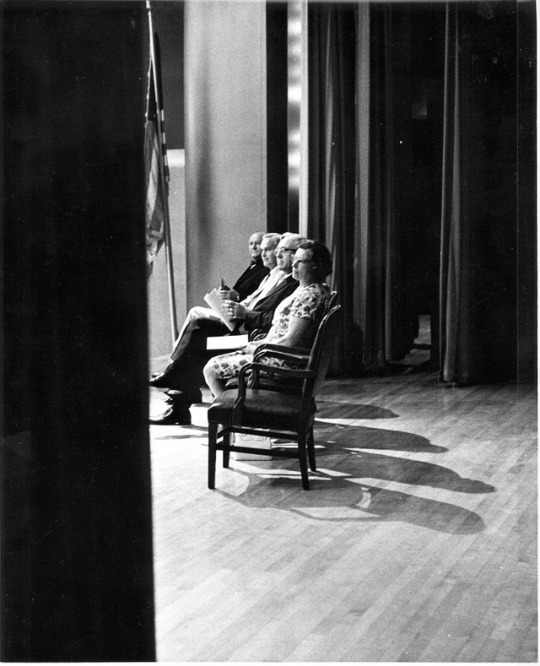
“The House that Jack Built” was how NIH staff referred to the Clinical Center, in honor of Dr. Jack Masur, who helped plan, design, and construct the hospital and served as its director. So 50 years ago today, on the anniversary of the Clinical Center’s dedication, they dedicated the large auditorium to Masur. “This is the room where hundreds of visitors from all over the world are welcomed each year— Presidents, physicians and other scientists, nurses, educators, science writers, and other groups interested in health,” said then NIH Director Robert Q. Marston. Masur had died four months before the dedication. Watching the program on the Masur stage are Drs. Edwin Crosby, Robert Marston, Russell Nelson, and Mrs. Barbara Masur. Read more about the ceremony https://nihrecord.nih.gov/PDF_Archive/1969%20pdfs/19690723.pdf
0 notes
Photo

“In 1975, having a TV-like device that sat on the desktop and offered immediate access to hundreds of thousands of pages of patient records seemed like only a dream for the nurses, physicians, pharmacists, and dozens of other professionals charged with patient care at the Clinical Center. But MIS — the computerized medical information system that made its NIH debut that year — turned the dream into a reality.” The light pen shown here, when used with a computer, was the system’s basic tool. With a few flicks, doctors could retrieve patient records, request medication and lab work, update and print a medical care plan for the nurses, contact the dietician, and see test results.
Quote from https://bit.ly/2RtoZuw
0 notes
Photo
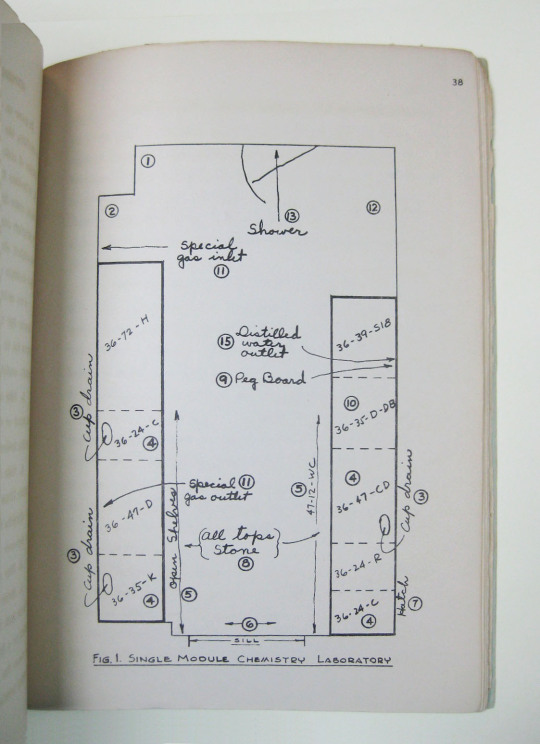
How do you plan laboratories for one of the largest biomedical research buildings in the world? What lay-outs make the most sense and allow for changing technology? How does the type of research dictate the use of space and instrumentation?
Those were the questions discussed every Wednesday morning by the Laboratory Facilities Planning Subcommittee in 1947. They visited laboratories across the country, met with staff, and invited manufacturer’s to show them their best wares. In the end, they came up with a guide for the NIH Clinical Center then under construction, which includes 21 pages of drawings and photos, lists of office and laboratory equipment, and a host of other design specifications.
0 notes